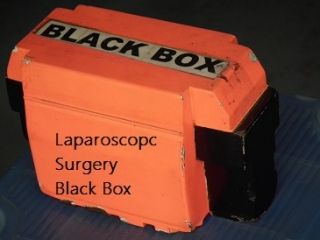Currently, whenever a surgery goes badly, doctors meet and discuss what might have happened based on any information they've, but often their details are limited. Black box is about the size of a box of tissues and records from nurse/doctor conversations to 70 degrees. It also records a gallery view of the operating area and a feed in the surgical camera. The black box’s use is limited to laparoscopic surgeries for the time being, but his research team wishes to develop boxes for urological and gynecological surgeries as well. Unfortunately, inadvertent bowel and ureter injuries from laparoscopic surgery aren't uncommon.
Laparoscopic surgery has become a standard procedure for many surgical specialties due to its minimally invasive nature and numerous benefits for patients. However, as with any surgical procedure, there is a risk of complications, and in some cases, these complications can be severe or even fatal. To address this issue, a new technology called the Black Box has been developed to monitor and record laparoscopic procedures. In this essay, we will discuss the Black Box in laparoscopic surgery, its benefits, and its potential impact on patient safety.
What is the Black Box?
The Black Box is a monitoring system that records the laparoscopic procedure in real-time. The system consists of a video recorder and a data acquisition device that records various parameters such as the surgical instrument movement, camera movement, and physiological parameters of the patient. The data is then analyzed to identify any deviations from normal procedure or any factors that could have led to complications.
The Black Box was developed in response to the need for better monitoring and documentation of laparoscopic procedures. The technology was originally used in aviation to monitor flight data and improve flight safety. The same concept has been applied to laparoscopic surgery, with the goal of improving patient safety and reducing the risk of complications.
Benefits of the Black Box in Laparoscopic Surgery:
The Black Box has several benefits in laparoscopic surgery, including:
-
Improved Safety: The Black Box provides real-time monitoring of the surgical procedure, allowing the surgical team to identify any deviations from normal procedure or any factors that could lead to complications. This allows for early intervention and improves patient safety.
-
Quality Improvement: The Black Box provides data that can be used to analyze the procedure and identify areas for improvement. This data can be used to develop best practices and improve the quality of care provided to patients.
-
Legal Protection: The Black Box provides a record of the procedure, which can be used in legal proceedings to defend the surgical team in case of malpractice claims.
-
Training: The Black Box provides a valuable tool for training purposes. The recorded data can be used to train new surgeons and improve their skills and techniques.
Potential Impact on Patient Safety:
The Black Box has the potential to significantly improve patient safety in laparoscopic surgery. By providing real-time monitoring and documentation of the procedure, the Black Box can help identify potential complications early on and allow for prompt intervention. This can help reduce the risk of complications and improve patient outcomes.
In addition, the data recorded by the Black Box can be used to develop best practices and improve the quality of care provided to patients. This can lead to better outcomes and reduced healthcare costs.
The Black Box can also provide legal protection for the surgical team. In the event of a malpractice claim, the recorded data can be used to defend the surgical team and provide evidence of proper procedure.
Potential Limitations of the Black Box:
Despite its potential benefits, there are also some limitations to the use of the Black Box in laparoscopic surgery. One of the main limitations is the cost. The Black Box is a new technology, and the cost of implementation may be prohibitively expensive for some healthcare facilities.
Another limitation is the potential for data overload. The Black Box records a large amount of data, and it may be challenging to analyze and interpret the data effectively.
There is also a concern that the use of the Black Box could lead to a loss of trust between the surgical team and the patient. Patients may be hesitant to undergo laparoscopic surgery if they know that their procedure is being recorded and monitored.
Conclusion:
The Black Box is a new technology that has the potential to significantly improve patient safety in laparoscopic surgery. By providing real-time monitoring and documentation of the procedure, the Black Box can help identify potential complications early on and allow for prompt intervention
